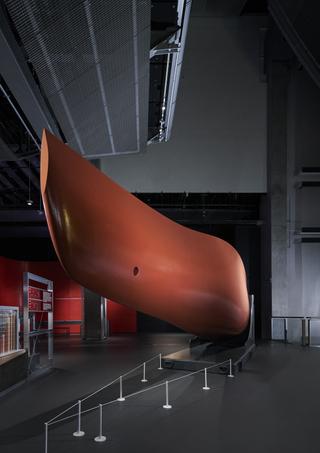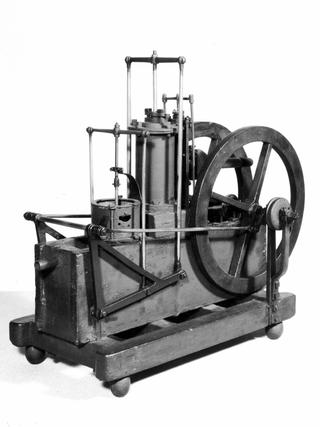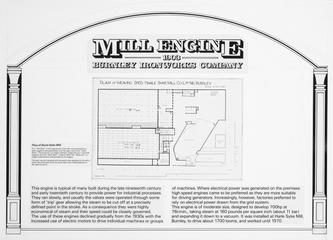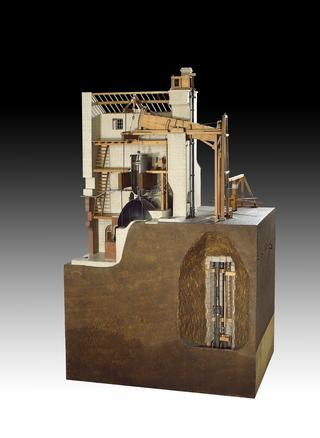
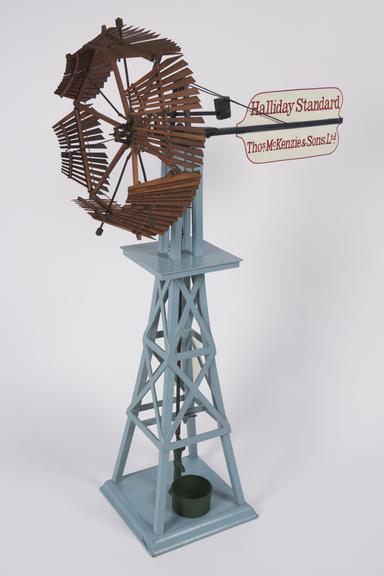
working model (scale 1:12) of Halliday's 1877 "Standard" self-regulating windmill, arranged for pumping, invented 1854, by Thos. McKenzie and Sons Ltd., 15 Queen Street, London.
Introduced in 1877, this type of windmill came into widespread use particularly in the United States of America. The sail is made up of vanes pivoted about their mid-points, arranged in radial groups interconnected by levers operated by a sliding sleeve on the shaft. The sleeve is engaged by the yoke of a weighted lever, the position of which adjusts the angle of the vanes to the wind. This is adjusted by a rope attached to the lever. The mill is directed by a tailboard. The model illustrates the commonest use of of such mills, pumping water, although the motion could be transmitted to other machinery by gearing.
Details
- Category:
- Motive Power
- Object Number:
- 1888-297
- Measurements:
-
: 43.3071 x 17.3228 x 25.9843 in.; 1100 x 440 x 660 mm
overall weight: x x , , 4kg
- type:
- model - representation
- credit:
- Thos. McKenzie and Sons Ltd.
